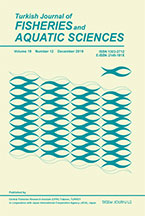Aquaculture Studies
2024, Vol 24, Num, 3 (Pages: AQUAST1655)
Trout Production in District Ganderbal – An Analysis of Economic Challenges
2 Assistant Director Fisheries, Ganderbal, J&K, India DOI : 10.4194/AQUAST1655 Viewed : 2871 - Downloaded : 1913 The present study carried during the year 2022-23, worked on the impact of the introduction of genetically improved strains of rainbow trout on the economy of the fish farmers, in comparison to the normal strains. The economy of 40 farmers in groups of 20 Normal stock (NS) and Genetically Improved Stock (GIS) each was conducted and interviewed using a pre-tested questionnaire. The investigation showed that fixed capital investment on sample farm was Rs.1.25 lakh per raceway in both the set ups. The major share of investment was for the construction of raceway, which accounted for 68.53% of total investment on sample farms. The share of total variable cost was 58.37% in NS and 48.50 in GIS per cent and fixed cost was 41.62 in NS and 51.49 in GIS group. Feed was the major cost component accounting for about 46.43 per cent of the total cost in NS, while as it was reduced to 37.15% in GIS, thereby encouraging as a key factor in deciding profitability of trout farming. Resource use efficiency showed that feed was overutilized while labor was under-utilized in NS, while as it was optimally utilized in GIS group. The returns to scale in trout production of 1.25 indicates increasing returns to scale in trout production. High price of feed and seed are found to be the major constraints in trout culture. The B-C ratio worked out to be 1.37 in NS group and 1.87 in GIS group, indicating the economic feasibility of trout farming in the Kashmir valley, and better economic profile of farmers farming GIS strain. Keywords : Rainbow trout Cost and return B-C ratio Resource use efficiency Returns to scale and J&K















